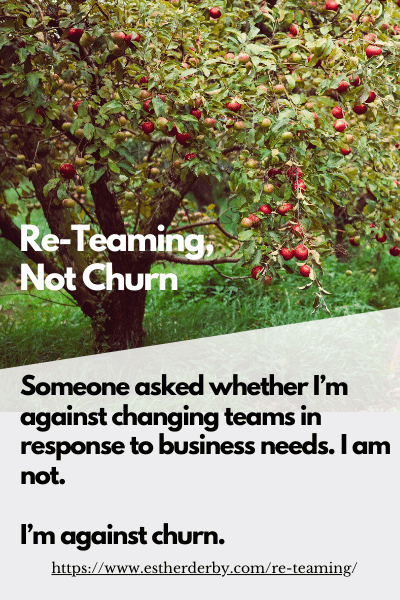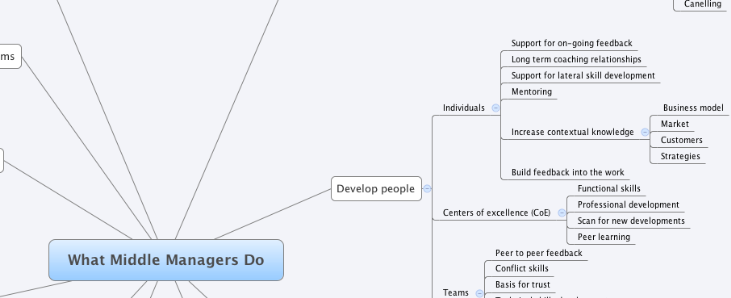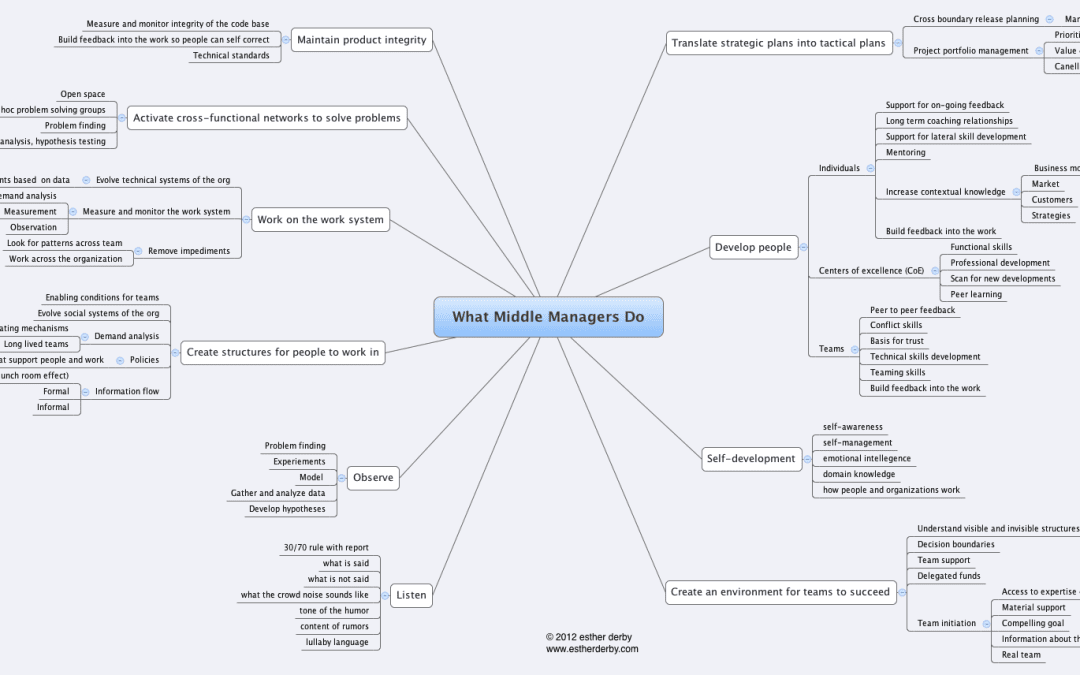
by Esther Derby | Nov 19, 2020 | Collaboration & Teams, Organizational Change
In response to a tweet on the benefits of stable teams, someone asked whether I’m against changing teams (aka re-teaming) in response to business needs. I am not. I’m against churn. There are plenty of good reasons to re-form teams to meet organizational...
by Esther Derby | Apr 17, 2020 | Collaboration & Teams, Leadership & Management
I visited an organization making an Agile transformation. It looked like the teams were making great progress. But the managers asked, “How can we tell they are working hard?” Team members seemed happy with their cross-functional teams. They solved...

by Esther Derby | May 14, 2012 | Collaboration & Teams, Organizational Change
Improvement requires three factors: Information. People need information about the context and how their work fits into the big picture. They need information from the work so they can self-correct. Without this information, systematic improvement is impossible. A...

by Esther Derby | Apr 9, 2012 | Collaboration & Teams, Leadership & Management
Hiring new people for a team should always be a joint decision that involves team members. After all, who has more at stake than the people who will work with the new person day in and day out? Consider what happened when a well-intentioned manager decided to hire...

by Esther Derby | Apr 1, 2012 | Leadership & Management
I have seen situations where both senior level and middle level management saw the value in Agile. Moving towards a team-based organization and iterative incremental delivery brings benefits. In my experience, it’s a little more common for middle managers to...





